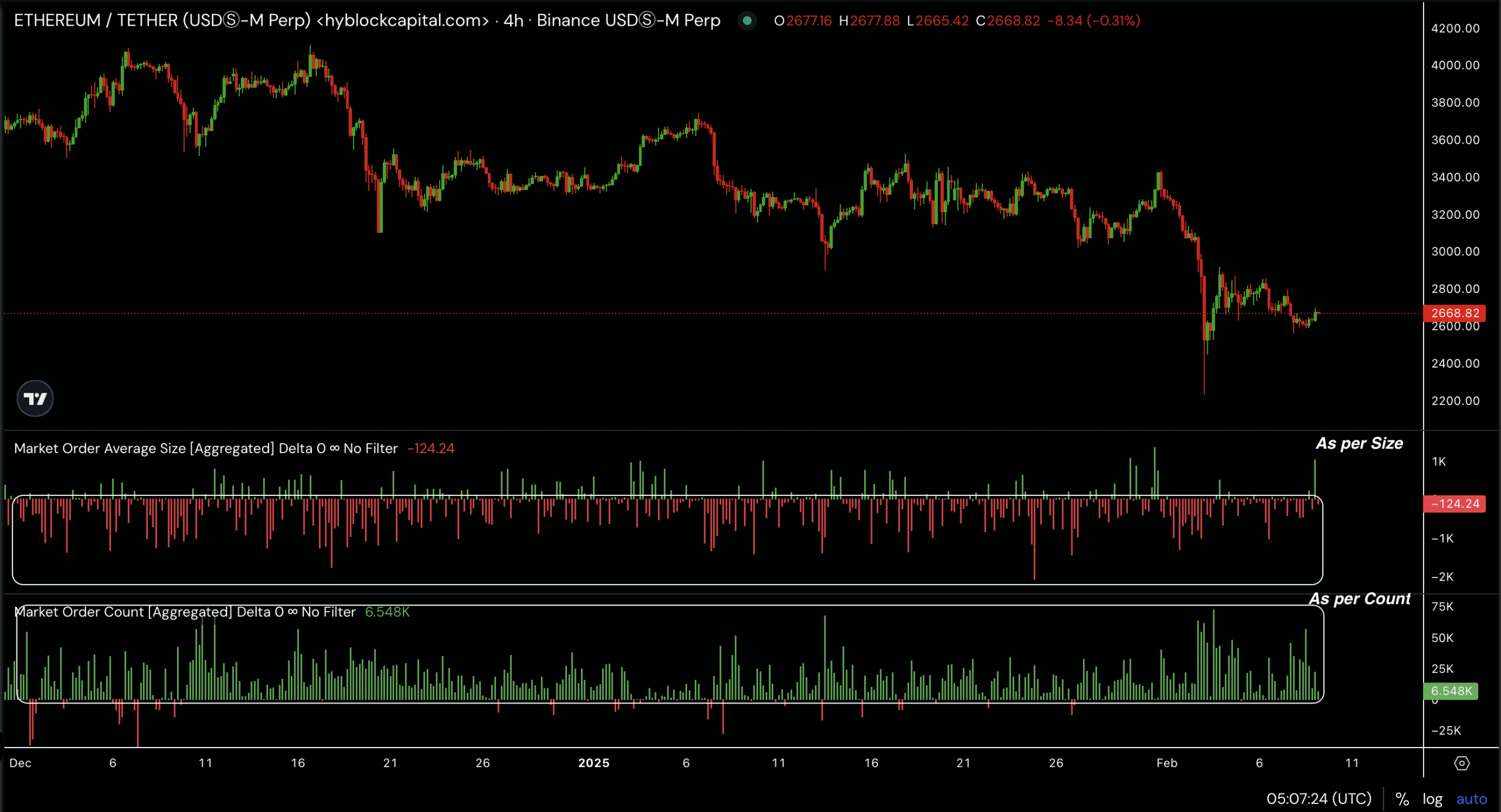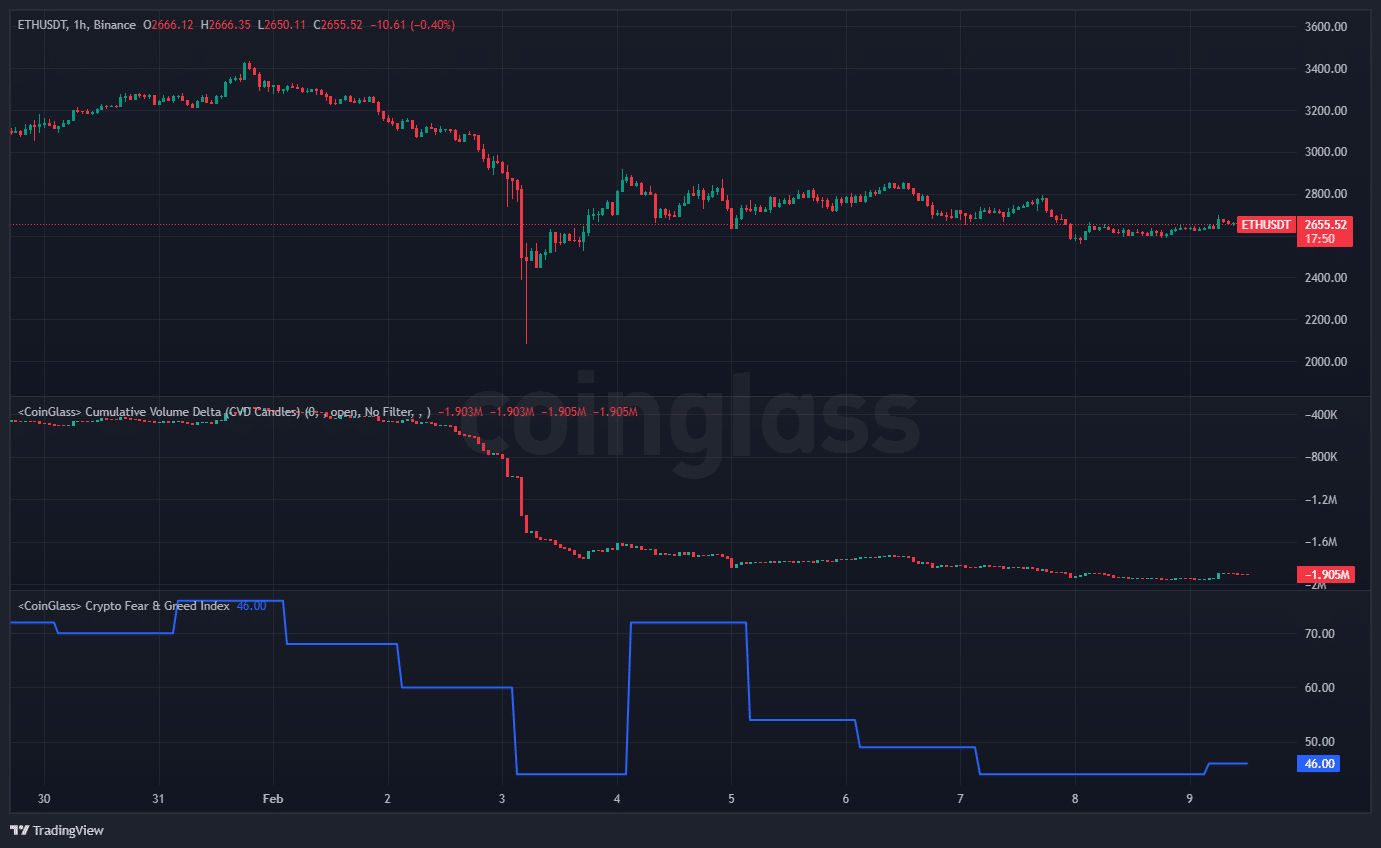-
Ethereum’s market is currently undergoing a significant transformation driven by contrasting activities from institutional investors and retail traders.
-
This dual dynamic may indicate shifting investor sentiments and the potential for increased volatility in Ethereum’s price.
-
As reported by COINOTAG, a 30% increase in retail purchases has been witnessed alongside a marked decrease in whale holdings.
Explore how Ethereum is navigating contrasting market forces with rising retail interest amid significant whale sell-offs.
A tale of two forces in Ethereum trading dynamics
Since late 2024, Ethereum has observed a substantial uptick in aggressive sell orders, notably from larger investors—commonly referred to as whales. Analytics of the average market order size underscore this trend, highlighting the significant influence of whale activity.

Source: TradingView
At the same time, data indicates a rising trend in aggressive buy orders, suggesting heightened retail participation. This phenomenon may imply that whales are divesting portions of their holdings, potentially in response to profit-taking strategies or market risk assessments, while retail investors capitalize on lower prices driven by these sell-offs.
Despite the potential for downward pressure on ETH’s price due to large sell orders, there’s a chance for increased buying interest among retail traders to recalibrate market dynamics and support a price surge if momentum sustains.
What’s driving Ethereum’s current movement?
Examining the Fear and Greed Index alongside the Cumulative Volume Delta (CVD) reveals a pronounced negative trend in CVD, indicative of increased market sell pressure. This trend suggests that a higher volume of selling is occurring compared to buying activity.

Source: TradingView
This prevailing market sentiment indicates that while significant whale selling pressures the price, retail trader optimism may mitigate a sudden decline—increasing the likelihood of market stabilization or a modest recovery taking place.
Uncertainty or opportunity amidst the volatility?
An analysis of bid-ask spreads highlights significant variations across different exchanges. Wider spreads may suggest lower liquidity or elevated volatility periods, especially during spikes observed in trading activities.

Source: IntoTheBlock
Wider bid-ask spreads often translate to heightened trading costs for smaller investors, which may deter further purchasing activities and amplify bearish trends initiated by whale sell-offs. Consequently, this creates a challenging landscape for retail investors aiming to maintain market presence.
Shifting market sentiment revealed through volatility
The volatility trend chart delineates a gradual decline since mid-2023, punctuated by sporadic spikes reflecting market reactions. Currently, the decreasing trend indicates a more stable market, but recent upticks signal growing tensions among traders.

Source: IntoTheBlock
This fluctuating volatility may mirror the ongoing tussle between whale selling forces and retail buying, potentially setting the stage for forthcoming price movements as participants react to the evolving market conditions.
What’s next for ETH?
Given the prevailing market scenario, the Ethereum market appears to be entering a phase of consolidation. Neutral readings from the Fear and Greed Index underscore the absence of panic selling or exuberance, suggesting that participants are likely to adopt cautious trading strategies.
Should retail buying momentum remain strong, a stabilization or modest rally in ETH’s price could mitigate the sell-off pressures.
On the contrary, sustained whale selling without adequate retail buying could put spiraling pressure on Ethereum prices, possibly pushing them lower.
As ETH navigates this complex market landscape marked by divergent strategies, the outcome hinges on the balance of power between profit-seeking whales and optimistic retail investors.
